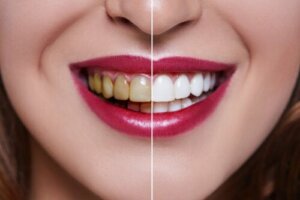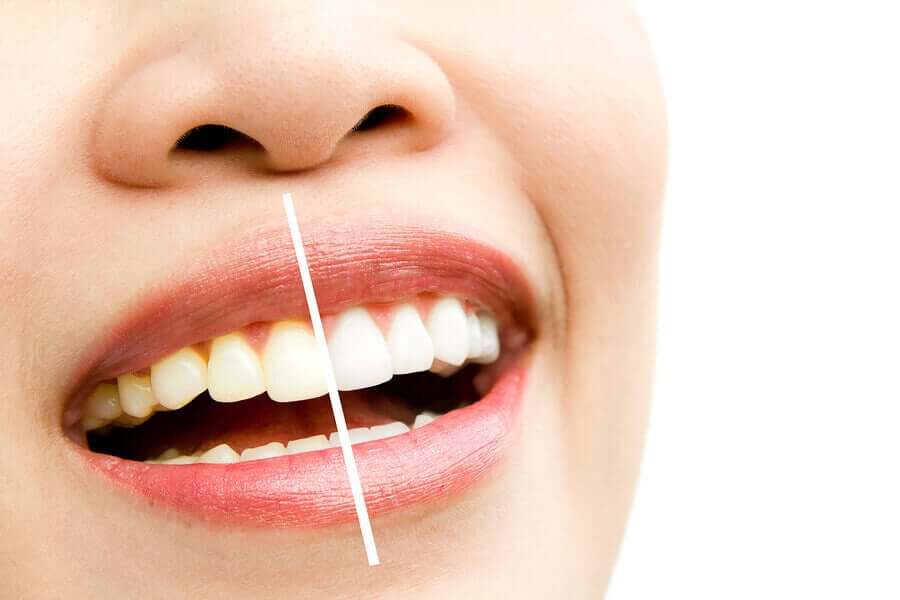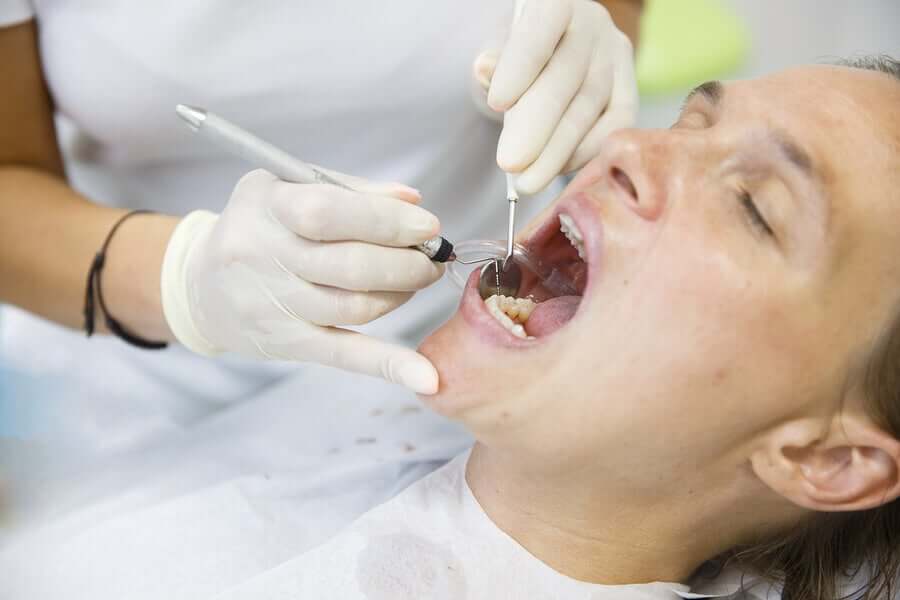The Causes of Stained Teeth


Written and verified by the doctor Leonardo Biolatto
Dentists study the appearance and morphology of stained teeth to discover how to treat them and how to prevent them. For patients, teeth stains are also a cosmetic concern. Your smile and the act of speaking shouldn’t be affected by discolorations that make your teeth look dull.
Let’s take a look at some of the possible causes of this common issue.
Types of stained teeth
First, it’s important to know that there are basically two types of tooth stains:
1. Extrinsic
These discolorations affect the outermost layers of a tooth. They’re often caused by pigmented residue from different drinks or foods. Wine, coffee, and soy sauce can cause them.
Smokers also have extrinsic teeth stains due to tobacco. However, they can also appear due to tooth aging and wear, even without having been exposed to these factors.
2. Intrinsic
These tooth stains affect the inner layer of teeth. Trauma or a birth defect can cause them.
Sometimes, they can appear when a pregnant woman ingests a particular drug during pregnancy, such as tetracyclines. One particular condition that causes them is fluorosis from excessive fluoride intake.
Extrinsic teeth stains can become intrinsic due to penetration. A tooth stain on the enamel, which is the outermost layer, can penetrate the inside of the tooth to the dentin.
The causes of stained teeth
Below, we’ll tell you the most common causes of stained teeth in the general population. Some of them are the following:
- Aging. Over the years, tooth enamel becomes darker. Wear and tear thins teeth enamel, revealing the inner layers, which have a different color.
- Food. As we mentioned above, some drinks and foods are capable of staining teeth. Coffee is one of the teeth stainers par excellence. Red wine, carrots, citrus fruits, and vinegar are erosive to enamel and can stain teeth.
- Tobacco. Nicotine stains teeth brown.
- Natural color. Not all people’s teeth are the same color. From birth, different shade colors can make staining more evident.
- Drugs. Some drugs are associated with tooth discoloration, such as diphenhydramine and chlorhexidine. However, this only occurs if they’re consumed over long periods of time. Other drugs, including tetracyclines, disturb teeth formation in childhood.
- Fluorosis. When a person consumes more fluoride than recommended, it builds up in their body, especially in the teeth. The fluoride in teeth produces stains.
- Trauma. Mainly in children, whose teeth are still developing, a trauma can alter the growth process, forming a stain.
- Poor hygiene. Lack of brushing or poor brushing technique can cause stained teeth.

Keep reading to learn more: Teeth Whitening Procedures: Description and Types
The colors of teeth stains
Not all tooth stains are the same. They come in different colors, depending on the cause that originated them. The color is important for the dentist who’s consulted for the stained teeth since it can help guide the diagnosis.
White spots, for example, point to fluorosis. The spots caused by bacterial plaque buildup are also white, which are more evident the worse the oral hygiene is.
The color brown is usually due to food or drink. Tobacco also causes brownish coloration in the teeth. A buildup of food scraps causes yellow spots.
Yellow in teeth reveals bacterial plaque, which forms due to microorganisms that found a good place to develop due to lack of hygiene.
Green spots are more common at an early age. Like yellow spots, they’re linked to poor brushing. The green pigment behind this staining is called phenazine and it’s due to particular bacteria and fungi.
Finally, the black spots on the teeth stem from high consumption of iron or due to drugs such as chlorhexidine. Black spots are a symptom of periodontitis.

Find out more here: 5 Habits to Help You Take Care of Your Dental Health
How to prevent stained teeth
You can apply general guidelines to try to avoid the appearance of stains on your teeth. Some of them are the following:
- Improve your dental hygiene. Brushing your teeth correctly and frequently are the main ways to protect your teeth.
- Visit the dentist. You must go see a dentist regularly to get your teeth checked out and receive appropriate recommendations.
- Reduce your consumption of drinks such as coffee or soda.
- Avoid or quit smoking.
Have you noticed any stains on your teeth?
If so, make an appointment with a dentist to discover what may be going on.
All cited sources were thoroughly reviewed by our team to ensure their quality, reliability, currency, and validity. The bibliography of this article was considered reliable and of academic or scientific accuracy.
- Ramírez, Paula, et al. “Prevalencia de manchas blancas antes y después del tratamiento de ortodoncia.” CES Odontología 27.2 (2014): 61-67.
- Morán, Vera, and Dick Bryan. Estudio comparativo de los agentes blanqueadores en dientes con discromía. BS thesis. Universidad de Guayaquil. Facultad Piloto de Odontología, 2016.
- Viñuela, Alicia Celemín. “ESTUDIO COMPARATIVO DEL COLOR DENTAL SEGÚN EDAD, GÉNERO Y TIPO DE DIENTE.” (2016).
This text is provided for informational purposes only and does not replace consultation with a professional. If in doubt, consult your specialist.








